The North Coast 500 isn’t just a brilliant road trip, for wildlife fans its also takes you around some of the best spot to dolphins, puffins, red deer, eagles, seals, and even whales in Scotland.
Whether you want to watch dolphins from Chanonry Point or spot a golden eagle over the Torridon mountains, this is the guide for you. Grab your binoculars, let’s go.
Here are my favourite places to see wildlife on Scotland’s NC500 route:
- Bottlenose Dolphins – Chanonry Point, The Moray Firth
- Ospreys and Crossbills – Loch Fleet, Golspie
- Puffins – Dunnet Head and Duncansby Head & Stacks
- Hen Harriers and Peat Bogs – RSPB Forsinard Flows
- Great Skuas and Bonxies – Handa Island, Tarbert
- Whales – Stoer Head & the Old Man of Stoer
- Golden Eagles and Red Deer – Beinn Eighe National Nature Reserve
- Red Squirrels and leaping Salmon – Rogie Falls
Read on for the best places to see wildlife on the NC500.
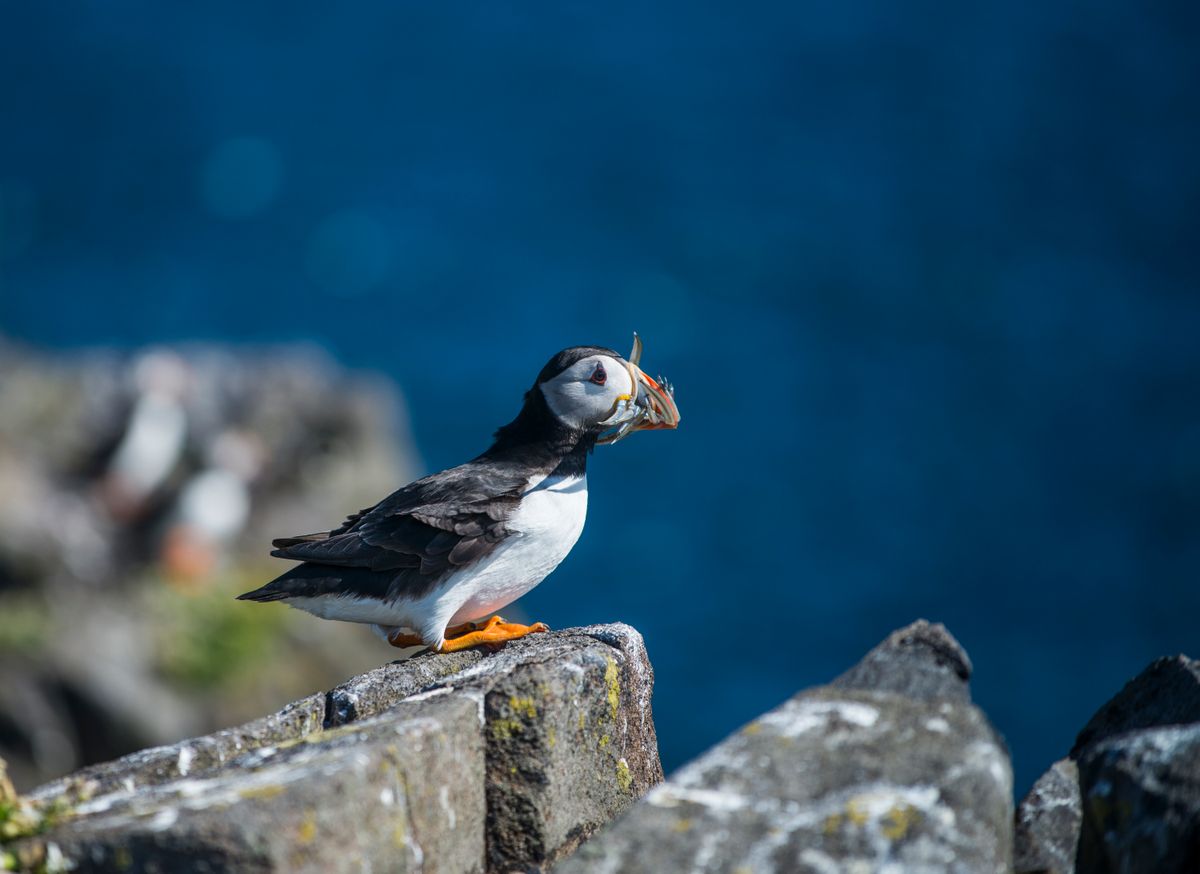
The Moray Firth – for Bottlenose Dolphins
The Moray Firth is famous for its dolphin population. It is estimated that around 130 Bottlenose Dolphins live in the waters off Inverness and Morayshire – which makes the Moray Firth one of the best spots for North Coast 500 wildlife.
The best place to got Moray Firth dolphin watching is Chanonry Point on the Black Isle north of Inverness, but they can be seen all along the coast including at Spey Bay where you can visit Scottish Dolphin Centre.
Where & When to See Bottlenose Dolphins
The best time to see Dolphins on the North Coast 500 is on an incoming/rising tide which brings in the food for the dolphins. The best time to arrive is around 45 minutes before high tide.
Either try and spot them from the land (don’t forget your binoculars) or take a boat trip out onto the Moray Firth with North 58 who do dolphin watching trips. You might also be lucky enough to spot Orcas too!
> How to visit the Moray Firth
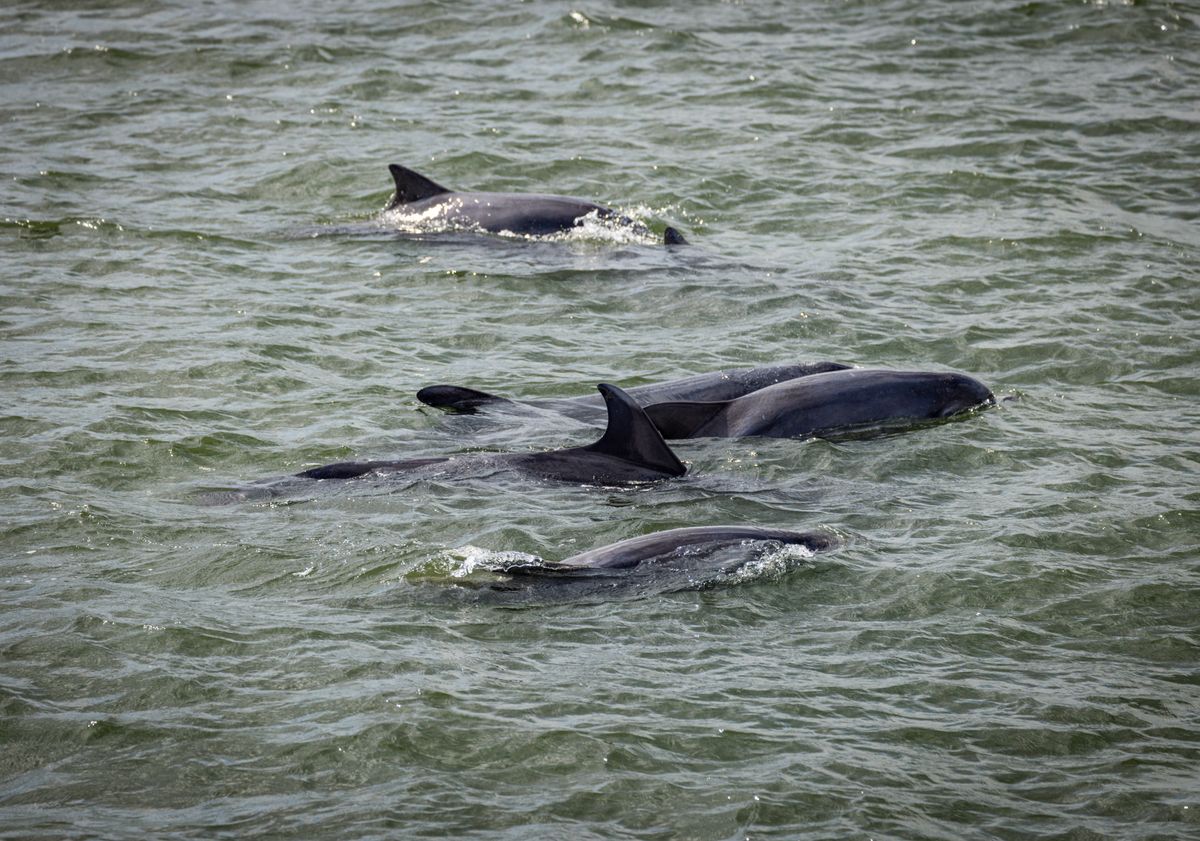
Loch Fleet – for Ospreys and Scottish Crossbills
You won’t find Loch Fleet or Balblair Woods on any list of things to do on the North Coast 500, but this National Nature Reserve near Golspie is home to some of Scotland’s rarest residents.
You might spot an osprey diving into the loch, and in the woods listen out for super rare crossbills. Stay over night and you might see a greedy pine martens, red squirrels and even the potential to spot a Scottish wildcat.
Out on the sands of this tidal loch you will spot Scottish Harbour Seals too.
> Book into the Birdwatchers Cabin on Loch Fleet.
Dunnet Head and Duncansby Head & Stacks – for Puffins
Dunnet Head and Duncansby Head & Stacks are two top spots on the NC500 to see Atlantic puffins up close.
At Dunnet Head, home to the RSPB’s largest reserve on mainland Britain, puffins nest on dramatic sea cliffs. There is all-abilities path leads to a cliff-top viewing platform, giving accessible and reliable puffin-watching—especially during May to July breeding season.
Duncansby Head, at Scotland’s northeastern tip, offers cliff top walks and seastack views. You might also spot puffins, at nesting time on the cliff edges or in the rock cavities.
Please note that ‘Puffin Cove’ near Thurso has been closed off to visitors due to the potential damage to the puffin colony here from too many visitors.
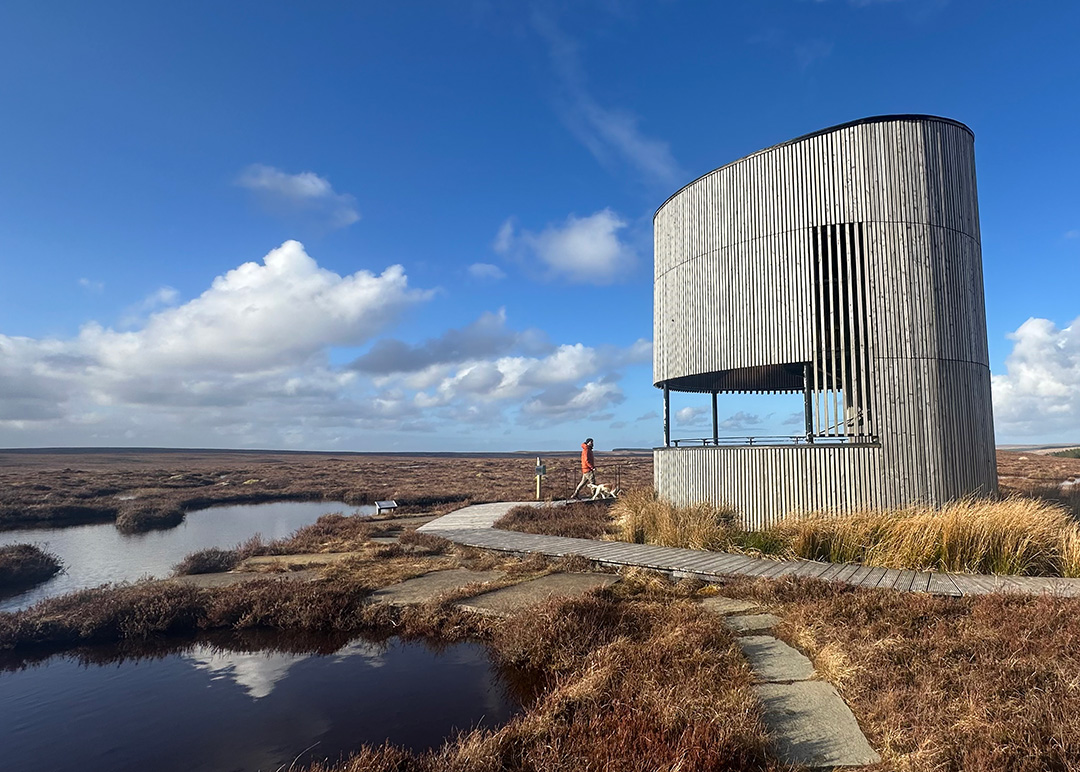
RSPB Forsinard Flows – for Hen Harriers and Peat Bogs
A very rare type of peatland, the Flow Country is the most extensive blanket bog system in the world. Made up of a series of 190,000 hectares of peat bogs and pools, the bog has been growing for nearly 10,000 years.
The Flow Country is a stunningly beautiful place to visit, home to plants and wildlife such as merlin, golden plover, buzzards and hen harriers. One of the most prevalent plant species of the Flow Country is sphagnum moss which helps the peat bog store all its water.
The best spot to visit the Flow Country is at the RSPB Forsinard Flows Visitor Centre which is located on the A897 at Forsinard (KW13 6YT) halfway between Helmsdale on the east coast and Melvich on the far north coast.
Explore the boardwalks of the Dubh-Lochain trail (1.6km) which take you to the fabulous Flows Lookout Tower where you get a 360 degree view of the bog.
> Find out more about visiting RSPB Forsinard Flows.
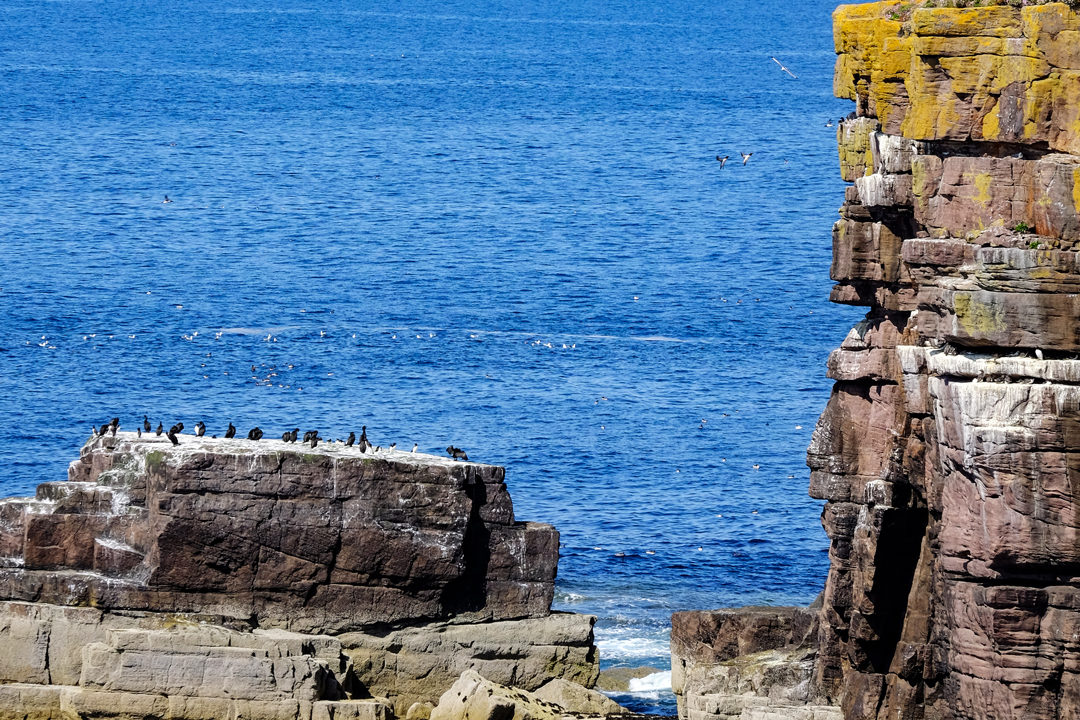
Handa Island – for great skuas and bonxies
owned by the Scourie Estate and managed in partnership with the Scottish Wildlife Trust, Handa is a breeding ground for over 10,000 seabirds.
Take the short ferry crossing to the island from Tarbert and walk around the island’s 4-mile circular boardwalk path.
In summer, the island’s machair (meadow) is filled with wildflowers. Hidden amongst the grass nest rare Skuas, the giant pirates of the sea, who can be seen battling Golden Eagles (and the much smaller ‘tourist eagle’ varieties) for any available air bound prey.
Watch out for the famously bossy Bonxies (step off the path and be prepared to be aerially pestered, just hold up your hands, or a walking pole in the air and move on very quickly) and puffins at ‘Puffin Cove’.
> Find out more about Handa Island.
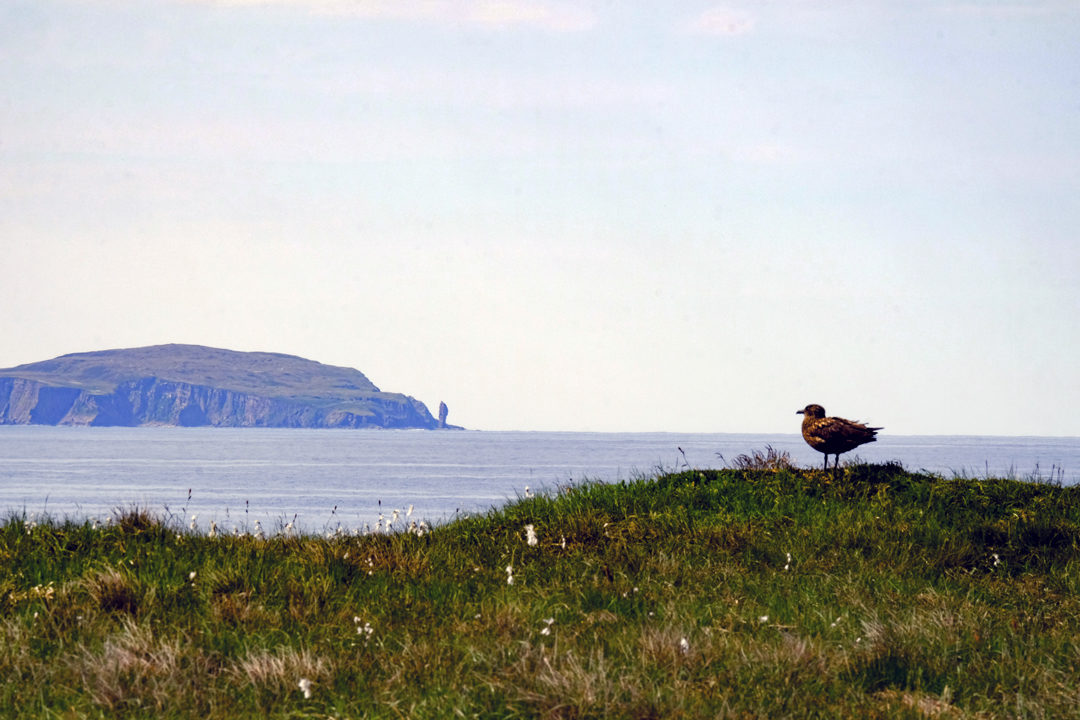
Stoer Head & the Old Man of Stoer – whales and other sealife
Stoer Head Lighthouse, perched on cliffs above The Minch, is a great spot to see minke whales breaching off the rocks.
Walk out to The Old Man of Stoer stroll, a cliff‑top walk to a 60 m sea‑stack, where you might spot olphins and porpoises. Take binoculars and a bit of patience!
> Walk out to the Old Man of Stoer on this 4.25 mile walk

Beinn Eighe National Nature Reserve – for Golden Eagles
Better known as a mecca for those wishing to climb the famous munros of Liathach, Beinn Alligin and Beinn Eighe, and the Torridon Hotel, one of Scotland’s most stylish hotels, the pinewoods of Beinn Eighe and the Loch Maree Islands NNR is of the most ancient and least disturbed fragments of native pinewood.
Managed by Nature Scot, the slopes of the mighty Beinn Eighe are home to 48sq kilometres of woodland and upland habitats including 350-year-old Scots Pines remnant of the ancient Caledonian forest.
Multiple trails in the NNR offer great chances to spot Golden Eagles circling overhead and deer grazing at dawn or dusk.
Rogie Falls – for red squirrels and leaping salmon
At Rogie Falls in Ross‑shire, you can witness Atlantic salmon leaping upstream over the falls, one of Scotland’s most famous salmon runs.
Salmon are often visible from the suspension bridge and riverside path in August and September.
The surrounding pine and birch woodland is also home to our gorgeous native red squirrels, explore on this 1 mile walk around the woods of Rogie Falls.
Planning your trip on the North Coast 500?
> Find all of my guides to planning your NC500 here.
Love from Scotland x
